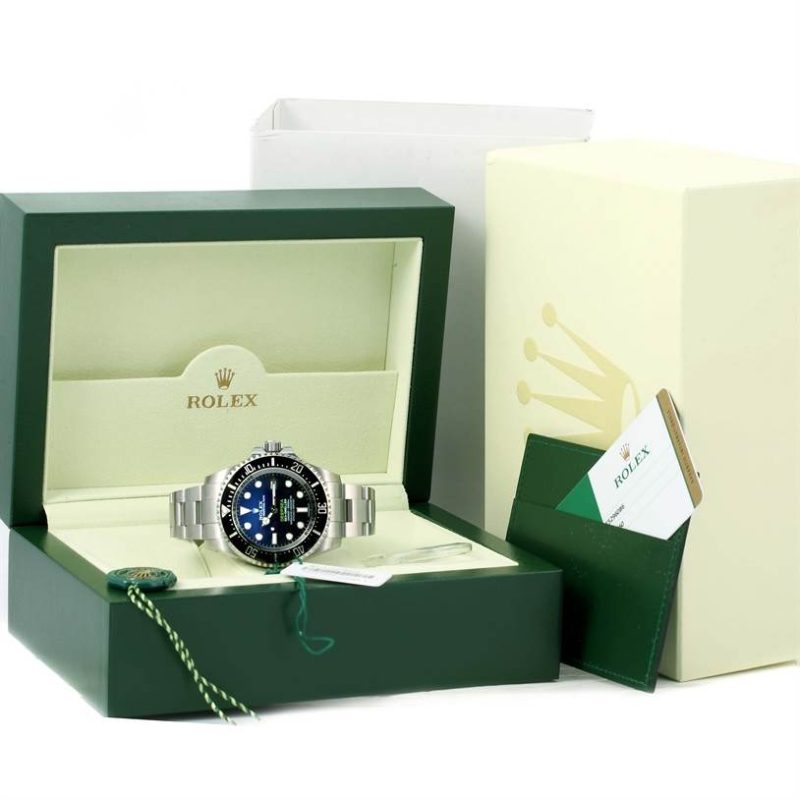Rolex
The Ultimate Guide to the Rolex Sea-Dweller
The Rolex Sea-Dweller stands as a paragon of dive watch engineering, celebrated for its unparalleled waterproof capabilities and robustness. Since its debut in 1967, it has set the standard for saturation diving watches, designed to withstand the extreme pressures encountered deep beneath the sea’s surface.
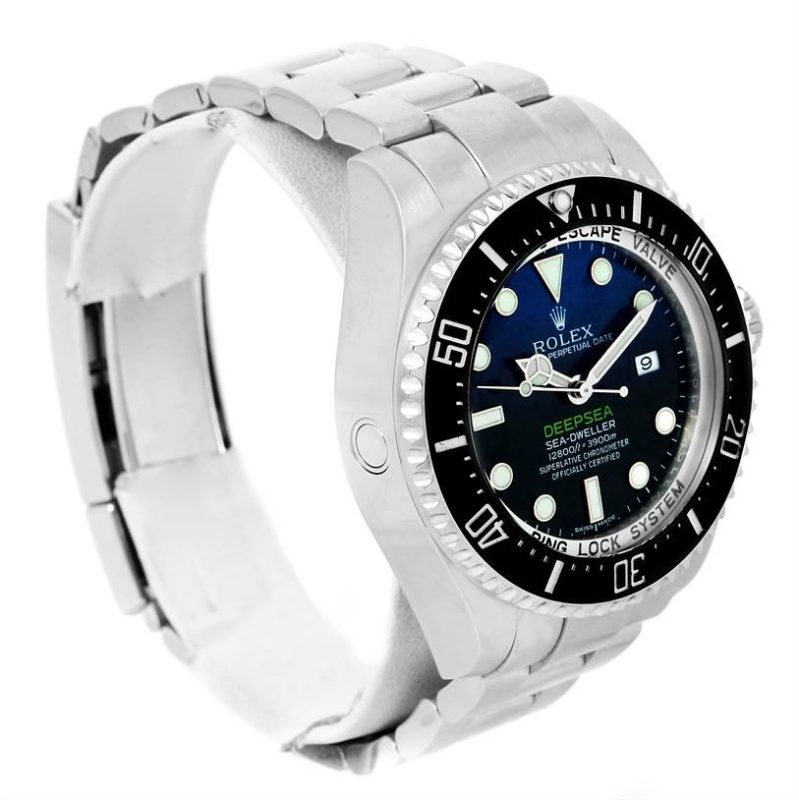
This guide dives deep into the intricacies of the Sea-Dweller, tracing its evolution and offering insights for both prospective buyers and enthusiasts fascinated by its storied history.
The Evolution of the Rolex Sea-Dweller
The Rolex Sea-Dweller’s journey began in the mid-1960s, evolving from the brand’s pioneering Submariner line to meet the demanding needs of professional deep-sea divers. Its creation was driven by the advent of saturation diving – a technique allowing divers to work at great depths for extended periods by breathing a mixture of gases. Traditional watches were prone to damage under the extreme pressures encountered in this new form of diving, mainly due to helium accumulation within the watch case during decompression.
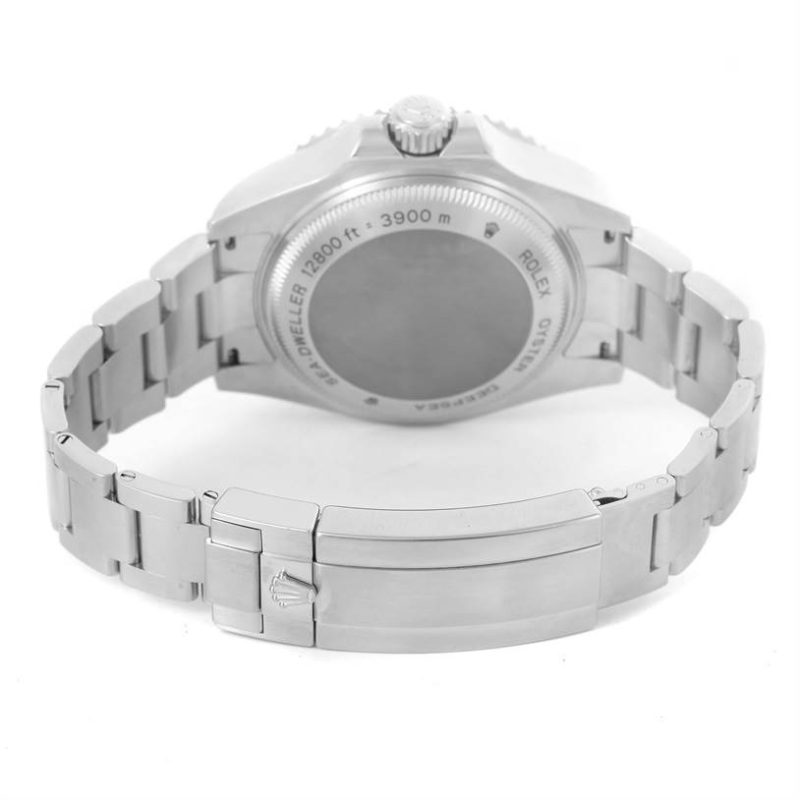
Rolex’s response was the innovative Sea-Dweller, introduced to the market in 1967. It featured a groundbreaking helium escape valve (HEV) that automatically released built-up helium without compromising the watch’s waterproof integrity, a feature developed in collaboration with the French diving company Comex. The Sea-Dweller quickly set a new standard for dive watches, boasting an initial water resistance of 610 meters (2,000 feet), far surpassing that of any predecessor.
Milestones in Sea-Dweller History
Throughout its history, clone Rolex has continually refined and enhanced the Sea-Dweller to push the boundaries of what a dive watch can achieve. Here are some key milestones:
1971: Rolex introduced the Sea-Dweller 2000, which featured an increased water resistance of up to 2000 meters.
1978: The introduction of the Reference 16660, known as the “Triple Six,” saw an increased depth rating to 1,220 meters (4,000 feet), alongside improvements in the watch’s crystal, bezel, and movement. It was the first to feature a sapphire crystal and a new movement with improved frequency and a quick-set date feature.
2008: Rolex introduced the Sea-Dweller Deepsea, which further pushed the limits of water resistance with a rating of up to 12,800 feet. This model featured a larger case and a thicker crystal, making it suitable for the most extreme deep-sea diving expeditions.
2014: After a five-year absence, the Sea-Dweller made a comeback with the introduction of the reference 116600. This model featured a ceramic bezel instead of the previous aluminum one, and the case size was reduced back to 40mm.
2017: For the 50th anniversary of the Sea-Dweller, Rolex introduced a new case size: 43mm. Aside from the new case size, it also featured a Cyclops lens (a first for the Sea-Dweller line), the then-new 3235 Perpetual movement, and the return of the red “Sea-Dweller” text on the dial.
2023: The Rolex Sea-Dweller Deepsea appeared in full 18k yellow gold for the first time. It is also decked with a blue dial and Cerachrom bezel, and a screw-down case back in Rolex’s proprietary grade 5 titanium material, RLX titanium.
The Sea-Dweller’s design and capabilities have evolved with each new reference, embodying Rolex’s commitment to precision, durability, and innovation in the world of professional diving watches.
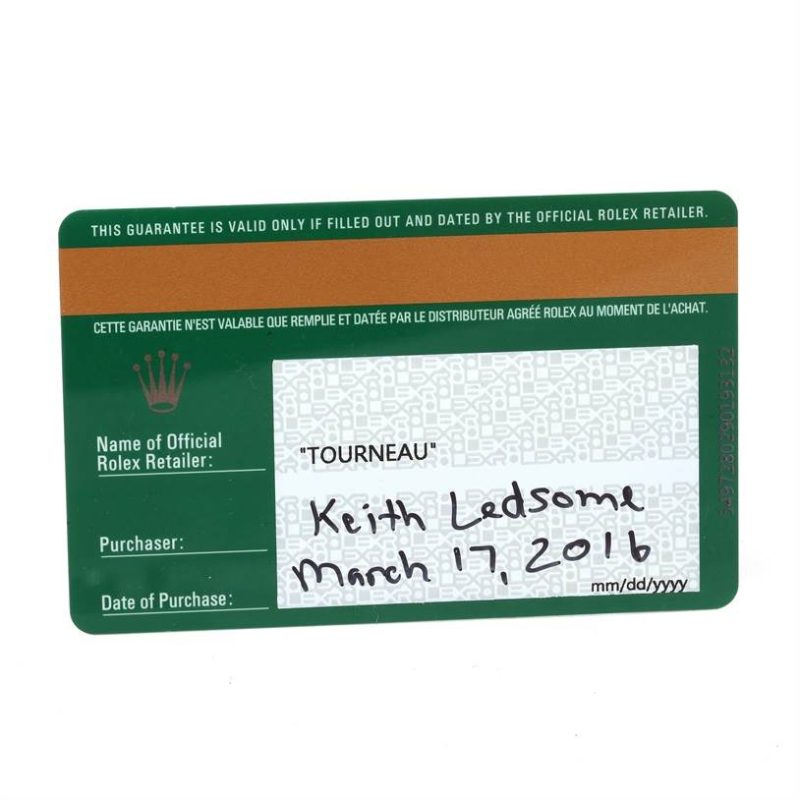
Key Terms and Features of the Rolex Sea-Dweller
Navigating the world of the Rolex Sea-Dweller requires familiarity with specific terms that highlight the unique features and historical nuances of this iconic dive watch series:
Single Red: The very first prototypes featuring a singular line of red text reading “Sea-Dweller” on the dial. Their scarcity has led to high valuations at auctions.
Double Red (DRSD): Early production models with two lines of red text on the dial, stating “Sea-Dweller” and “Submariner 2000” – a nod to their 2,000ft (610m) water-resistance capability. These models are highly sought after, though not as rare as the Single Reds.
Mark Dials: These dials are categorized from Mark 0 through 7, indicating chronological variations in dial designs. Marks 0 to 4 are original dials, prized for their age and authenticity, while Marks 5 to 7 are considered Rolex replacement dials.
Rail Dial: Identified by the alignment of the letter “C” in the phrases “Superlative Chronometer” and “Officially Certified” on the dial. A Rail Dial signifies a Mark 2, produced briefly by the Stern Company, and is valued for its rarity.
Triple Six: The nickname for the Reference 16660, recognized for introducing significant technological advancements in the Sea-Dweller series.
Patent-Pending: Refers to early Sea-Dweller models released before Rolex received approval for its helium escape valve patent. These models have “patent pending” inscribed on the case back, adding to their collectible value.
Great White: This term describes the Reference 1665 produced from 1977 to 1983, distinguished by its white text (replacing the earlier red text) and subtly alluding to the shark species, fitting for a dive watch.
Comex: Watches commissioned by the French diving company Comex (Compagnie Maritime d’Expertises) for saturation diving. Sea-Dwellers with the Comex logo, particularly on references 1665, 16660, and 16600, are exceedingly rare and valuable.
Gas Escape Valve: Also known as the helium escape valve (HEV), this feature enables the release of helium atoms accumulated inside the watch during decompression from saturation diving, ensuring the watch’s integrity and functionality.
Iconic References of the Rolex Sea-Dweller
Rolex is known for continuously improving and updating its watches, and the Sea-Dweller is no exception. Here’s an in-depth look at the key references:
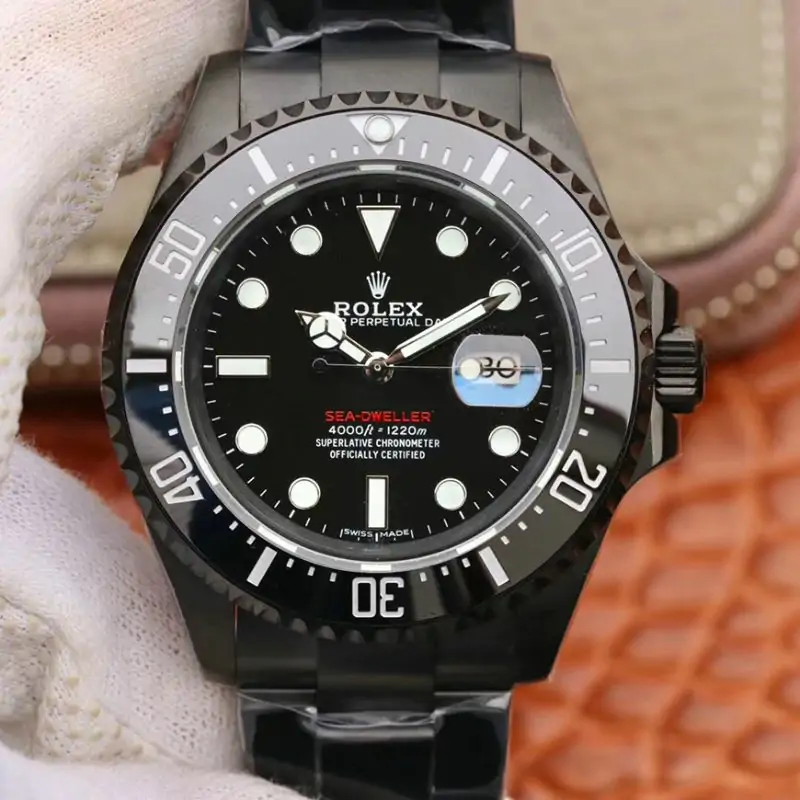
Reference 1665 “Double Red” (DRSD): Produced from 1967 to 1977, it stands out for its distinctive features and significant place in dive watch history. Characterized by two lines of red text on the dial that read “Sea-Dweller” and “Submariner 2000,” it emphasized its water-resistance capability of 2,000 ft (610 meters). This model was among the first to feature a helium escape valve (HEV), addressing the issue of helium accumulation during saturation diving.
Reference 1665 “Great White”: Produced between 1977 and 1983, this model transitioned to a black and white dial, dropping the “Submariner 2000” name and the red text, thus establishing its distinct identity. Key features include a 40mm stainless steel case, matte black dial with tritium luminous hour markers, bidirectional aluminum bezel, acrylic crystal, and the Rolex Caliber 1575 movement.
Reference 16660 “Triple Six”: Produced from 1978 to 1989, this reference introduced several key upgrades, including a flat sapphire crystal, an increased water resistance of 4,000 feet (1,220 meters), and the Rolex Caliber 3035 movement with a quickset date feature. It marked a period of dial evolution within the Sea-Dweller line, showcasing different dial variations over its production years.
Reference 16600: Produced between 1989 and 2009, this model is renowned for its technical enhancements, including a sapphire crystal, a helium escape valve, and a water resistance of 1,220 meters (4,000 feet). It featured the Rolex Caliber 3135 movement, offering a 48-hour power reserve and quickset date function.
Reference 116660 “Deepsea”: Produced from 2008 to 2017, it marked a significant advancement in the brand’s dive watch lineup, introducing unparalleled depth capabilities with a rating of up to 3,900 meters (12,800 feet). This model featured a 44mm Oystersteel case, Cerachrom bezel, and Glidelock clasp.
Reference 116600: Unveiled at Baselworld 2014, it blended classic design elements with modern technology, including a 40mm case size, Cerachrom bezel, and Chromalight luminescent markers. It maintained a water resistance of 1,220 meters (4,000 feet) and included the Rolex Caliber 3135 movement.
Reference 126600: Unveiled in 2017, this model featured a larger 43mm case size and a Cyclops lens over the date display for the first time in the series. It incorporated the new-generation Caliber 3235 movement, promising improved precision and a 70-hour power reserve.
Reference 126660 “Deepsea”: Launched in 2018, this model transitioned from the Caliber 3135 to the Caliber 3235 movement, enhancing power reserve and accuracy. It featured elongated hands for better legibility and a blue Chromalight display.
Reference 136660: Released in 2022, this model featured a more pronounced crystal and an updated caseback made from RLX titanium, improving wearability and performance. It continued to offer water resistance up to 3,900 meters (12,800 feet).
Reference 136668LB: The latest edition, combining the unmatched durability of the Deepsea line with the luxury of an 18k yellow gold construction. This model is designed for both extreme underwater exploration and stylish above-ground wear.
Comparing Sea-Dweller and Submariner
The Sea-Dweller and Submariner are both iconic dive watches from Rolex, but they cater to different audiences and have distinct characteristics:
Water Resistance: The Submariner offers water resistance up to 300 meters (1,000 feet), suitable for recreational diving. In contrast, the Sea-Dweller caters to professional divers with water resistance of up to 1,220 meters (4,000 feet) or even 3,900 meters (12,800 feet) in the Deepsea models.
Helium Escape Valve: Exclusive to the Sea-Dweller, this feature allows the release of helium buildup during decompression in saturation diving, preventing damage to the watch.
Case Size: The Submariner typically features a 40mm case size, making it versatile for everyday wear. The Sea-Dweller’s larger case sizes (43mm for the standard model and 44mm for the Deepsea) cater to those needing a more robust watch.
Cyclops Lens: The Sea-Dweller traditionally did not feature the Cyclops lens over the date window, a hallmark of the Submariner. However, recent Sea-Dweller models, starting with the reference 126600, have adopted this feature.
Dial and Bezel Design: Both models feature similar dial and bezel designs, with the Submariner often available in more color variations. The Sea-Dweller’s designs are typically more focused on functionality, with a black dial being the most common.
Buying a Rolex Sea-Dweller
When considering purchasing a Rolex Sea-Dweller, whether new or pre-owned, here are essential factors to consider:
Authenticity: Verify the authenticity of the watch by checking for a clear serial number and comparing it with Rolex’s records. Purchase from reputable dealers to avoid counterfeits.
Condition: Examine the watch’s condition, including the case, crystal, bezel, and bracelet. Pre-owned models should be checked for signs of wear or damage.
Service History: A well-documented service history indicates that the watch has been properly maintained. Consider models that have been serviced by authorized Rolex service centers.
Value and Investment: The Sea-Dweller’s value can vary significantly based on its reference, age, and condition. Some models, particularly vintage ones with unique features like the “Double Red” or “Comex,” are highly sought after by collectors and can appreciate over time.
Warranty and Documentation: Ensure the watch comes with its original box, papers, and warranty card. This documentation enhances the watch’s value and provides peace of mind regarding its authenticity and provenance.
The replica Rolex Sea-Dweller remains an icon of professional dive watches, blending advanced technology with Rolex’s hallmark elegance and durability. Its rich history, spanning over five decades, showcases continuous innovation and dedication to meeting the needs of professional divers. Whether you are a seasoned collector or a prospective buyer, understanding the Sea-Dweller’s evolution, key features, and iconic references will enhance your appreciation of this exceptional watch.

